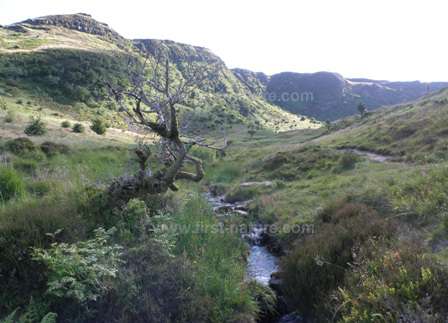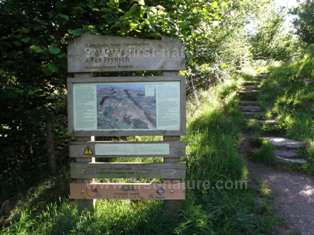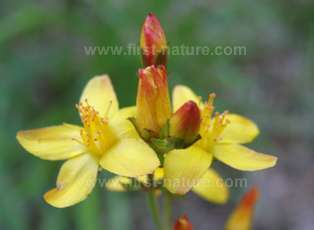Craig Cerrig Gleisiad a Fan Frynych National Nature Reserve, Brecon, East Wales
Designations: Part of the Brecon Beacons SSSI and SAC
Below:View of the nature reserve near the main access point off the A470

The dramatic landscape that we see at Craig Cerrig Gleisiad a Fan Frynych National Nature Reserve (the term Craig Cerrig Gleisiad translated to English means Bluestone Rock) is a powerful illustration of the effects that the last Ice Age had both during the formation and the eventual retreat immense glaciers approximately 12,000 years ago. The steep rocky slopes, sharp escarpments and crags that surround the vast basin (cwm) that we see today are home to rare birds and arctic plants, which in the latter case are at the most southerly edge of their distribution in the UK. In addition, the site has marsh, heath, fen, scrub and grassland habitats supporting numerous other plant, fungus, bird, insect, amphibian and reptile species.
This reserve is managed by Natural Resources Wales (NRW).
Directions
Grid Ref: SN956227
From Brecon take the A470 road southwards towards Merthyr Tydfil and Cardiff.
Drive through Libanus and then start looking out for laybys on the right-hand side of the road.
The main access point for the reserve is from the third layby on the right, which has picnic tables set back from the road.
Regrettably there is no sign to tell you that this layby also provides access to one of the most outstanding National Nature Reserves in the whole of Wales, but do please persevere because a walk through this wonderful landscape is well worth the effort of struggling to find it!
Below: Information board just inside the reserve

Access
The reserve is open access throughout the year.
The path from the layby beside the A470 road takes you up into the reserve. The entrance is steep in places and has some uneven steps. All the paths throughout the reserve are fairly steep and they are rocky in places and not suitable for wheelchair users or for prams and pushchairs. Depending on where you walk, there are also a number of styles and gates.
Facilities
Other than the picnic tables at the entrance to the reserve there are no facilities, but there are public toilets and a café at the Mountain Centre in Libanus which is just a short drive away. There are information boards about the reserve close to the car park and just inside the main gated entrance.
Description of Site
The wild landscape of Craig Cerrig Gleisiad a Fan Frynych is a joy to see at any time of the year. Spring is the best time to visit to if your main interest is in the wildflowers and the birds, but in August and September the hillsides light up with the beautiful colour of Heather in full bloom.
Below: Slender St. John's-wort

More than 300 plant species are recorded from this site including about 100 different mosses and liverworts. Most notable, however, are the arctic-alpine wildflowers that grow on the rocky ledges of the cliffs and which are at the most southerly point of their UK distribution. They include Purple Saxifrage (Saxifraga oppositifolia), Lesser Meadow Rue, (Thalictrum minus) Cowberry (Vaccinium vitis-idaea) and Green Spleenwort (Asplenium viride).
Nationally scarce bryophytes (hornworts, liverworts and mosses) here include Plagiopus oederianus and Scapania aequiloba.
On our walk up to the reserve from the layby car park we found Slender St. John's-wort (Hypericum pulchrum) along with Red Campion (Silene dioica), Foxgloves (Digitalis purpurea) and Tormentil (Potentilla erecta) among others.
Ring Ouzels (Turdus torquatus) nest on the rocky crags along with Peregrine Falcons (Falco peregrinus) and Ravens (Corvus corax), while lower down in the heathland Skylarks (Alauda arvensis) and Northern Wheatears (Oenanthe oenanthe) can be seen.
Archaeological remains found on the reserve show that the area has been inhabited by Man for many thousands of years. Apart from an Iron Age Fort there are also the remains of a Roman road and a tollhouse.